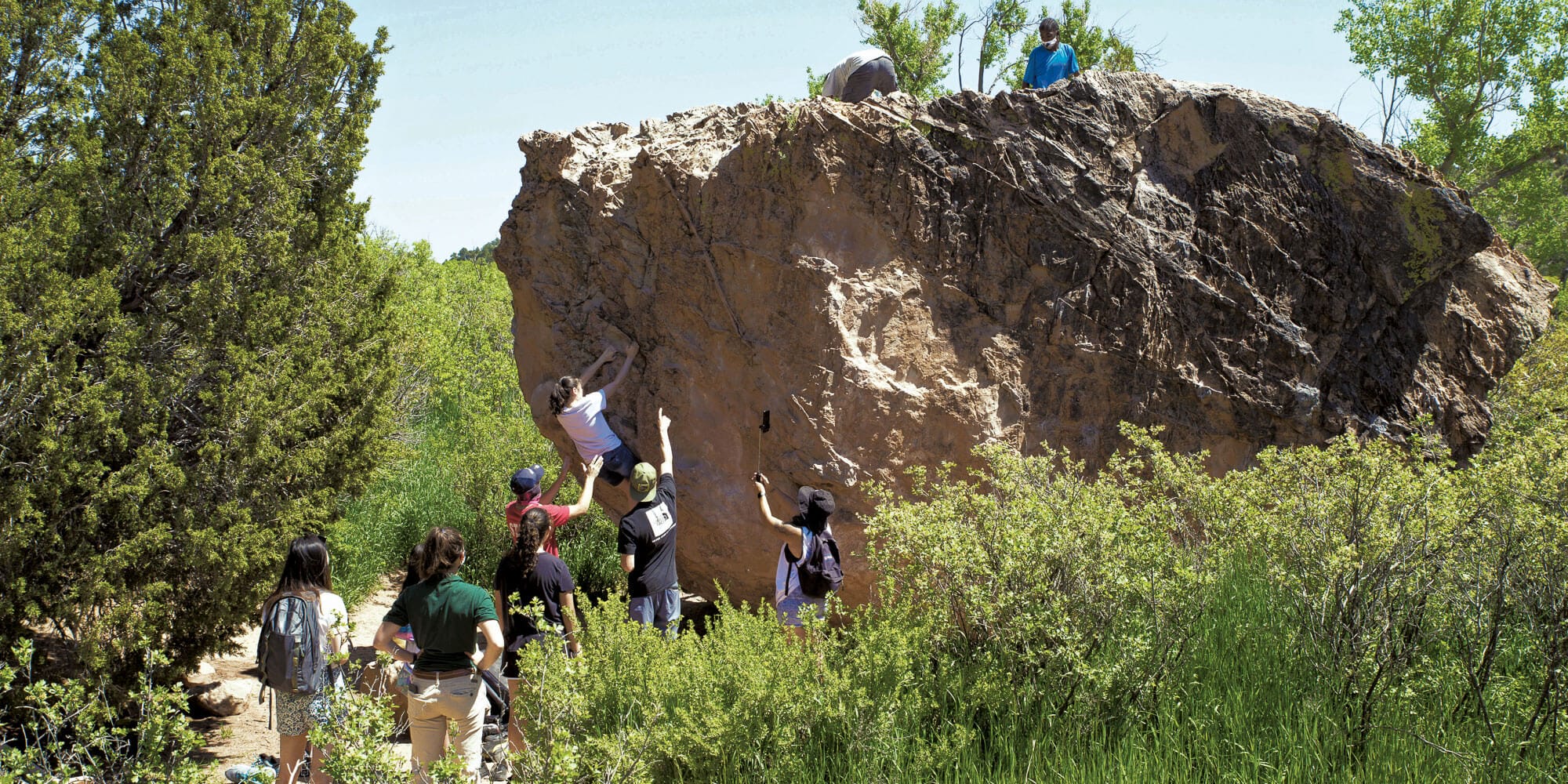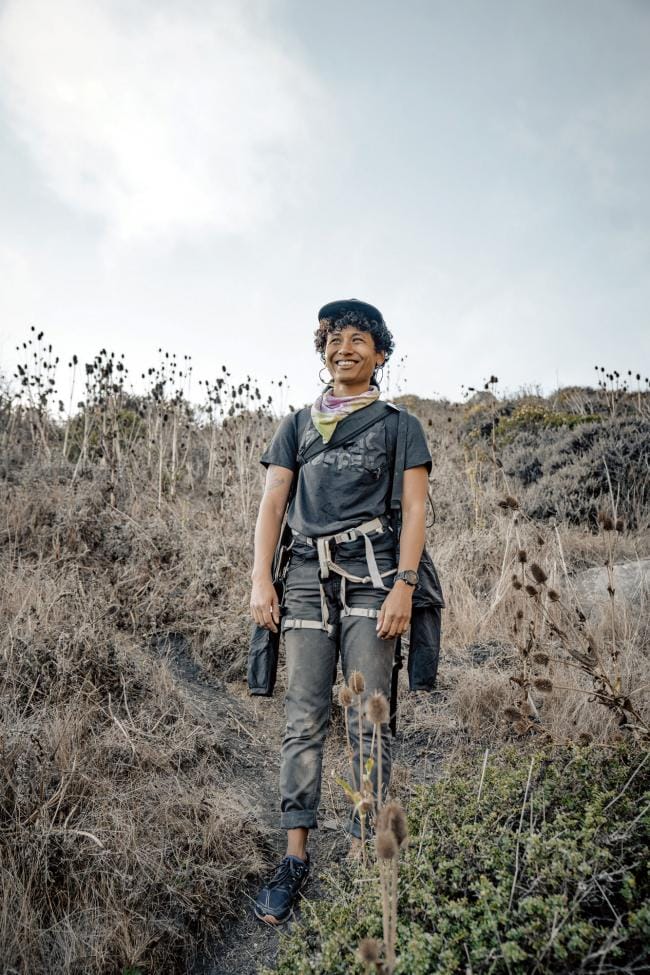 I spent this summer running through other people’s yards. I was visiting my mom in Worcester, Massachusetts, where I grew up. Almost every day, I went for a run along the trails that stretch luxuriously across the city. This network, sections of which are linked together by skinny easements through private property, is one reason why I was a runner as a kid, not a rock climber. Running on public trails, I felt like the most allowed, joyful, and welcomed version of myself.
I spent this summer running through other people’s yards. I was visiting my mom in Worcester, Massachusetts, where I grew up. Almost every day, I went for a run along the trails that stretch luxuriously across the city. This network, sections of which are linked together by skinny easements through private property, is one reason why I was a runner as a kid, not a rock climber. Running on public trails, I felt like the most allowed, joyful, and welcomed version of myself.
Which is not to say I never climbed. I spent sweaty, slow, dense summer days climbing the doorway to the kitchen, the doorway to the living room, the doorway to my bedroom. I climbed the tree that bent over the landlord’s garage in our backyard. I climbed the side of the house. When my older brother was home, he would take my sister and me to the wooded lot that began at the dirt end of our street, a quarter acre of jumbled trees, layers of leaf litter, and the rocky foundations of a house that had slid in some prehistoric past partway down the hill; we climbed all over that.
The act of climbing is a joyful contortion that many different types of bodies can do. It is public, as much or more so than running, if public means open to a lot of people. But climbing can feel private if private means closed to most people. The entry point is often a gym that you have to pay to use, wearing climbing-specific gear. I didn’t come to climbing-as-a-sport until I was in law school and could pay the price of private admission when I enrolled in an introductory climbing class. I loved it, but I didn’t necessarily feel like the most allowed, joyful, or welcomed version of myself.
Climbing culture is fun, exclusive, and elite. Currently, 85 percent of climbers are white; only 1 percent identify as Black, 1 percent as Indigenous, 3 percent as Latinx, and 6 percent as Asian or Pacific Islander. Further, 61 percent of climbers report an income of higher than $50,000 per year.
With this in mind, I talked to four climbers, all people of color, who are trying to make climbing more welcoming. Each found joyful ways to contort their bodies as children, on public lands, though none started climbing-as-a-sport until their twenties or thirties. We talked about how, for many people in the U.S., and specifically for people of color, public spaces are where our earliest relationships with our bodies, our communities, and our senses of safety, joy, and play are shaped.
The land we play on has been shaped by industrialization, environmental degradation, and pollution. In 2018, the Environmental Protection Agency reported that Black Americans and people of color are disproportionately more likely than white people to live near landfills and industrial plants that lead to water and air pollution, to live near hazardous waste sites, and to die from the effects of air and water pollution.
My conversations with these climbers spanned whether climbing can become more playful and more public, what it will take for the sport to be truly welcoming to different bodies, and whether being public might be another word for being connected.
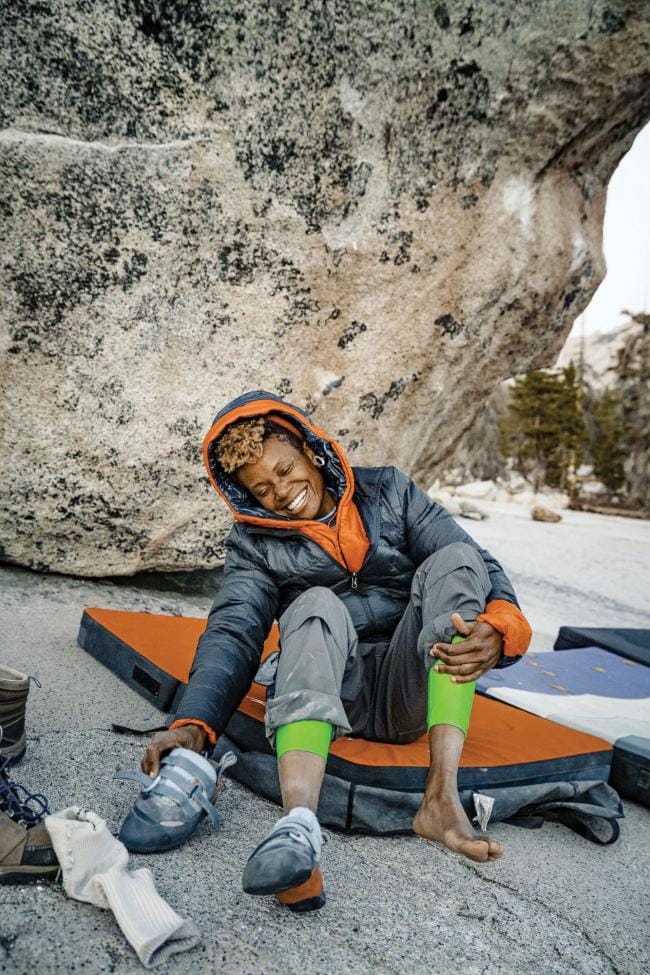 More than four thousand miles of canals cut through coastal Louisiana, dredged to make way for boats, rigs, and equipment to float through the marshy land. The canals let saltwater seep inland; the salt throttles the native plants that keep the wetlands from eroding away.
More than four thousand miles of canals cut through coastal Louisiana, dredged to make way for boats, rigs, and equipment to float through the marshy land. The canals let saltwater seep inland; the salt throttles the native plants that keep the wetlands from eroding away.
Slightly inland, in Labadieville, Louisiana, sharp green slivers of sugarcane blow in the salty breeze. At one point, over 300,000 acres here were planted with sugarcane, making it the primary plantation crop in southern Louisiana; enslaved Black Americans worked the fields.
“This is how we play, how we engage in the world.”
Summer Winston (right), who grew up in Labadieville, didn’t climb as a kid. Louisiana was too flat for outside climbing, and Summer’s family didn’t have money for “any extracurricular anything,” as they put it. “There were no gyms. No climbing resources. No fairground walls. That didn’t even happen,” Summer says.
As a kid, Summer would take out their bike, collect their friends, and spend the day exploring the sugarcane fields: playing hide and seek, running through the rows, chewing and sucking on stalks they’d break off from some farmer’s crop. At night, they would explore the canals by their house, looking for snakes, alligators, and toads. “This is how we play, how we engage in the world,” Summer tells me.
Brittany Leavitt is the cofounder of Brown Girls Climb, a network that connects women of color climbers around the world and offers mentorship, skill shares, and regional meetups. She told me she spent her childhood in parks in Washington, D.C., farms in upstate New York, and hanging out in tide pools outside Boston. She loved spending time in nature but often felt alienated. As a transracial adoptee—Brittany is Black, her parents are white—Brittany was used to being the only Black person outside. “I was so used to being surrounded by white,” she reflects. “My family is white. [I thought] being in nature was a thing that only white people did, and I got to be a part of it. Until I got older and understood much more of my culture and history—not only our connection to the outdoors but the trauma that has come from the outdoors.”
When Brittany started climbing, she realized that if she was going to advance in the sport, she would need a community beyond “the boys’ club” of climbers she met in her college gym. None of them seemed particularly interested in taking the time to teach her. She reluctantly put climbing to the side; she hadn’t yet met the community that made her feel welcome. Eventually, she would decide to create it herself.
With a boulder in Denver’s Montbello Open Space Park as the catalyst, Yesica Chavez and her friends created Chicas Que Escalan to create a community that might make climbing feel more joyful and welcoming to everyone in the Denver area.
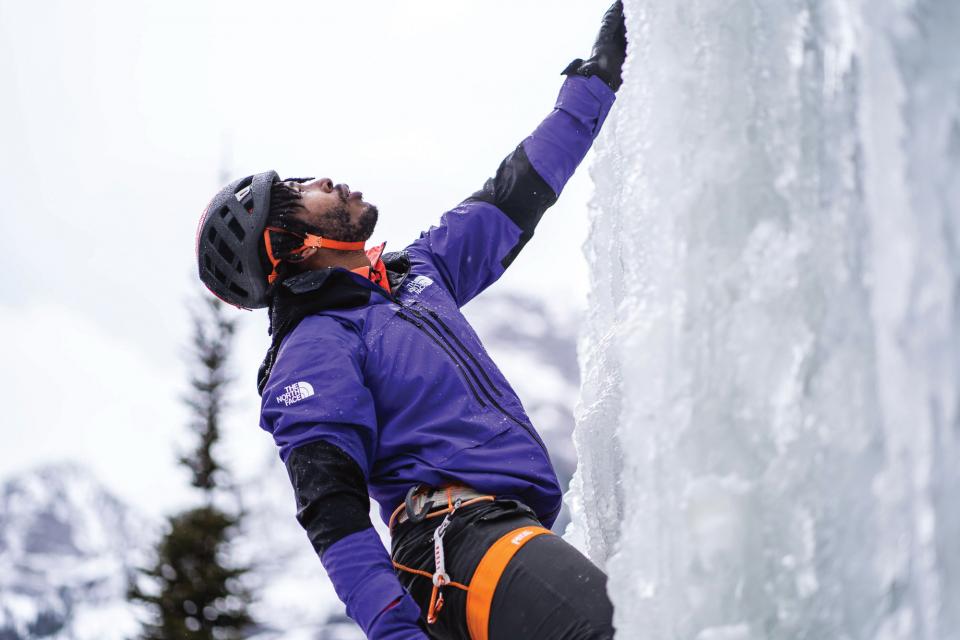 For Fred Campbell (left), a professional rock and ice climber, being outside mostly meant at the parks and the playgrounds around his childhood home in Oakland, California. “We loved playing in the park, playgrounds, and playing out in the rain. I liked running around, the freedom and the exploration, and seeing new things,” he says.
For Fred Campbell (left), a professional rock and ice climber, being outside mostly meant at the parks and the playgrounds around his childhood home in Oakland, California. “We loved playing in the park, playgrounds, and playing out in the rain. I liked running around, the freedom and the exploration, and seeing new things,” he says.
The people he knew played football, both in Oakland and later in New York, where his family moved when he was 12. “It was much easier to be a part of that, than climbing. [Climbing] wasn’t visible,” he said. Fred played football competitively, becoming a middle linebacker at Stanford until a serious accident sidelined him.
Summer discovered rock climbing on a camping trip in Texas in their thirties. Scrambling nervously down a steep slope after wandering off-trail, Summer looked up and saw people swinging, on ropes and gear, from the steep canyon walls overhead—the same rocks Summer and their partner were trying so desperately not to tumble from. Summer thought it looked amazing—not to mention a lot safer than the off-trail predicament they found themself in. Eventually, they got down safely and immediately searched online for coupons for “rock climbing” in the area when they got home. They found a gym and bought a 30-day pass.
“The first gym I started climbing in, I’d walk in and people would look at me but not say anything. There were no Brown or Black people.”
Climbing itself brought familiar feelings from childhood. But the community and belongingness were missing. “The first gym I started climbing in, I’d walk in and people would look at me but not say anything. There were no Brown or Black people. A bunch of white dudes with their shirts off, grunting. A really uncomfortable place,” Summer says. Familiar with making what had been built and shaped by others into their own—those dubious Louisiana canals and sugarcane fields—Summer decided to make the private landscape of climbing feel like it could belong to anyone.
In 2017, after attending Color the Crag, a climbing festival for people of color in Alabama, Summer and their friend Darrick Brody founded The Brown Ascenders, a group for people of color to climb together. In gyms and at outdoor meetups, climbers can get to know the land through climbing while surrounded by community.
The Anacostia River tumbles past pale brown cattails, shining green spatterdock, and slim gold-and-green stalks of wild rice. Pebbling the river itself, imported mussels siphon gallons of water through their gill chambers, doing their part to undo centuries of pollution. The Anacostia’s watershed drains an increasingly urbanized land. It includes Washington, D.C., Prince George’s County, and Montgomery County: regions that are home to some of the financially poorest communities in the country. These residents have long borne the brunt of the toxins, heavy metals, and raw sewage that have polluted the river through the early twenty-first century.
And yet, the area is beautiful and fecund, home to 43 species of fish and 200 species of birds. Scattered along the banks of the river’s Northwest Branch, just outside Silver Spring, Maryland, are hundreds of garage-size boulders that draw climbers from around the region.

This is where Brittany Leavitt (above) and her friend Bethany Lebewitz held the first meetup for Brown Girls Climb. Open to all, sun-drenched, and scrappy, the Northwest Branch Boulders could hardly be more different from the exclusive gym where Brittany first tried to climb. She and Bethany chose this spot because it is a short drive from major metro areas and because bouldering—a type of climbing in which climbers ascend short, hard routes without ropes—doesn’t require as much gear as climbing taller walls. Just shoes, chalk, and a crash pad (a soft pad placed beneath the boulder that can be shared among many climbers).
Climbing can be prohibitively expensive. Day passes at climbing gyms can cost $30 and renting gear can run you another $15, while buying your own (climbing shoes, harness, crash pad, rope, quick draws, belay devices, helmets, and more) can cost $1,000. Then there’s the cost of transportation to and from climbing destinations, taking time off from work, or any of the little luxuries that can make you feel like you really belong. Groups like The Brown Ascenders negotiate with local gyms to waive the cost of admission during their meetups and offer subsidized monthly membership rates, while building a gear library to help decrease the cost of outdoor trips.
“The act of climbing is such a natural human thing to do.”
The Brown Ascenders and Brown Girls Climb attempt to make newcomers feel welcome enough that they can experience climbing, without being distracted by anything else. “That first initial thing is comfort,” Summer says. “Just make it feel really natural, like a natural thing to go in and try. Because the act of climbing is such a natural human thing to do.”
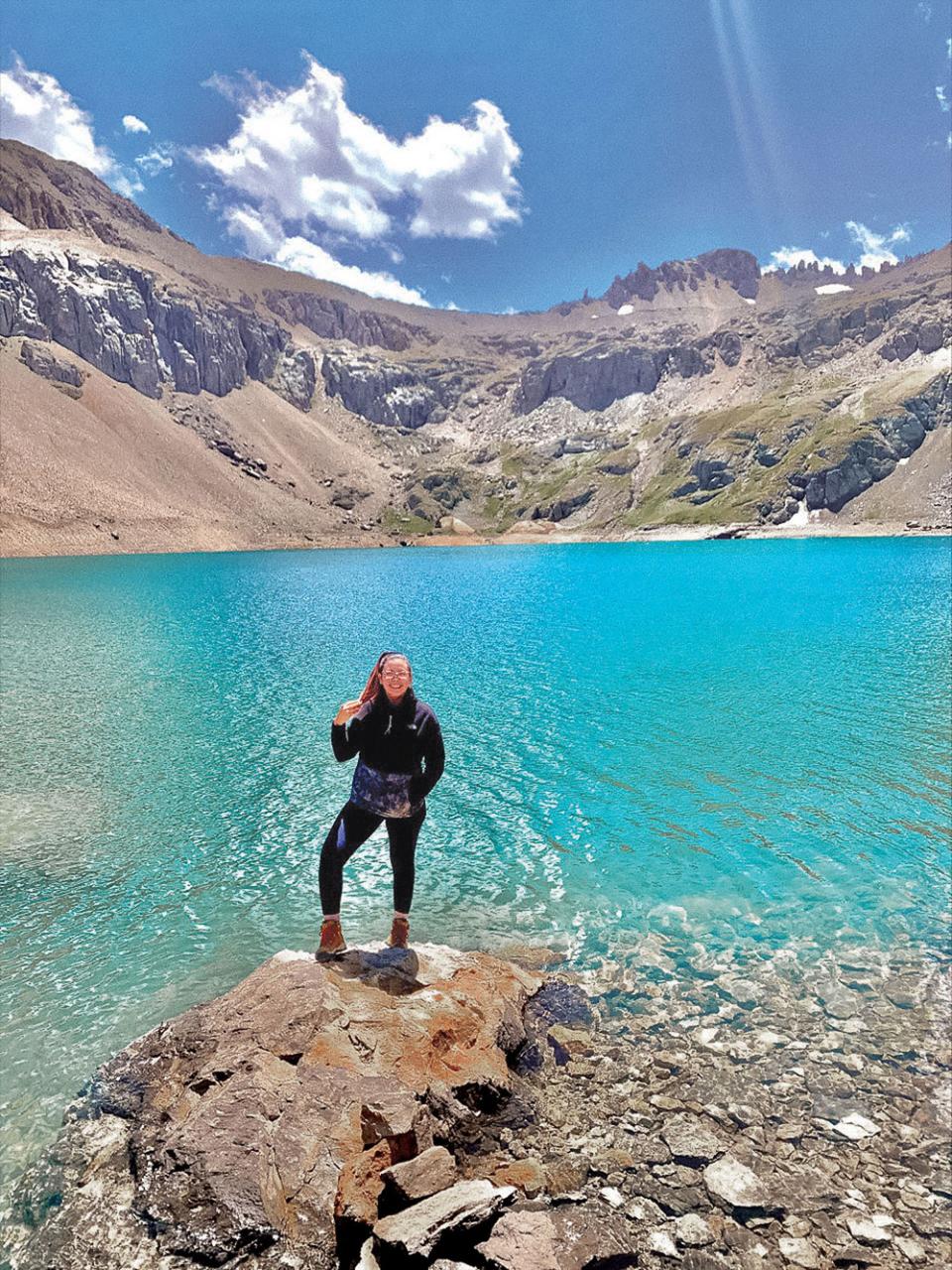 Yesica Chavez tried climbing for the first time three or four years ago at her college’s wellness center. Yesica (right) recalls her first impressions: “It was intimidating. No one looked like me. [It was] all these bulky white men going up this wall like it was nothing.” She didn’t try climbing again for another couple of years until she attended a meetup hosted by Brown Girls Climb in Denver. After that, she was hooked.
Yesica Chavez tried climbing for the first time three or four years ago at her college’s wellness center. Yesica (right) recalls her first impressions: “It was intimidating. No one looked like me. [It was] all these bulky white men going up this wall like it was nothing.” She didn’t try climbing again for another couple of years until she attended a meetup hosted by Brown Girls Climb in Denver. After that, she was hooked.
Yesica says Brown Girls Climb also taught her that she didn’t have to be a super-tough athlete who climbs for a living. She could climb as a hobby. “Climbing, in general, is intimidating,” she says. “If you’re scared of heights, that’s something you’ll have to push through.” She says the community she’s met through climbing has helped her overcome that sense of intimidation. “You may not know the person climbing, but someone is going to cheer you on.”
One of the largest public green spaces in Denver, Colorado, is the 15,000-acre Rocky Mountain Arsenal National Wildlife Refuge. Throughout the 20th century, this land was used to manufacture and dispose of chemical weapons, petroleum, and pesticides. By 1984, it was listed as one of the most contaminated areas in the United States and then it was transformed into a wildlife refuge. In 1986, a roost of bald eagles was discovered at the Arsenal; between 2004 and 2010, thousands of acres of the refuge were cleaned of contaminants and opened to the public.
The new Montbello Open Space Park sits just a mile from the refuge’s border, in the heart of one of Denver’s most densely populated neighborhoods. Today the park’s five acres of prairie are studded with native plants and threaded with walking trails. Trust for Public Land has worked closely with Environmental Learning for Kids (ELK), a community-based education nonprofit, to transform the land into a city park, which opened to the public this summer.
Montbello Open Space Park was envisioned, among other things, as “a gateway” into the wildlife refuge. It is also a gateway to climbing for young people, thanks to the convincingly craggy artificial boulder that juts up in the center of the park. The 11-foot structure is one of a half-dozen climbing boulders that Trust for Public Land has installed in city parks across the country, in partnership with The North Face.
“[The boulder] may not be a 20-foot wall or a big old gym, but it gives people the idea that this sport is accessible to them, climbing on walls, gripping on them, is doable,” Yesica says. A few years ago, ELK began taking students to climb at a local gym to get them excited for the boulder; often, Brown Girls Climb leaders Montserrat Alvarez Matehuala, Sasha McGhee, Chela Garcia Irlando, Noelia Aponte-Silva, and Ariana Antonio would come to share skills and provide encouragement and support. In 2018, Yesica launched Chicas Que Escalan (Girls Who Climb), a group for teenage girls who attend ELK programming.
After his football injury, Fred went on an expedition to Mt. Kilimanjaro with his dad. When Fred moved to Houston afterward, he looked into rock-climbing gyms. When I asked Fred what made climbing stick, he said, “I walked into a group of climbers who were pretty welcoming. It would have been so much harder without people who were patient, who could help teach me things. There’s so much to learn that I couldn’t imagine doing it without a group of people who were excited to reach out to new people.”
Now, Fred leads mountaineering clinics for people of color. As a member of The North Face’s team of elite climbers, he’s also teamed up with Trust for Public Land to help kids in cities from Atlanta to Dallas to Tacoma connect with climbing at local gyms and free boulders at city parks.
Ultimately, public spaces allow us access to each other. After talking with Summer, Brittany, Yesica, and Fred, I think about what it means for so many people of color to have access to safe public spaces where we learn how to love ourselves.
But mostly I think about young people like Yesica, growing up in Denver today who will play on a boulder built on a reclaimed lot now lush with native grasses and plants, down the street from a wilderness area. I think of Summer collecting their friends to steal stalks of sugarcane, crawling through treacherous canals to look for creatures that are contorting their bodies in spaces that are as much theirs as anyone else’s. I think of Fred finding his people on a football field, on top of Mt. Kilimanjaro, and in a climbing gym in Houston, Texas. I think of Brittany and Bethany and other women of color launching their bodies at boulders as mollusks suck up nastiness from the Anacostia River.
I feel grateful for the narrow spaces that link us together across the U.S., allowing us to play gleefully where we do belong.
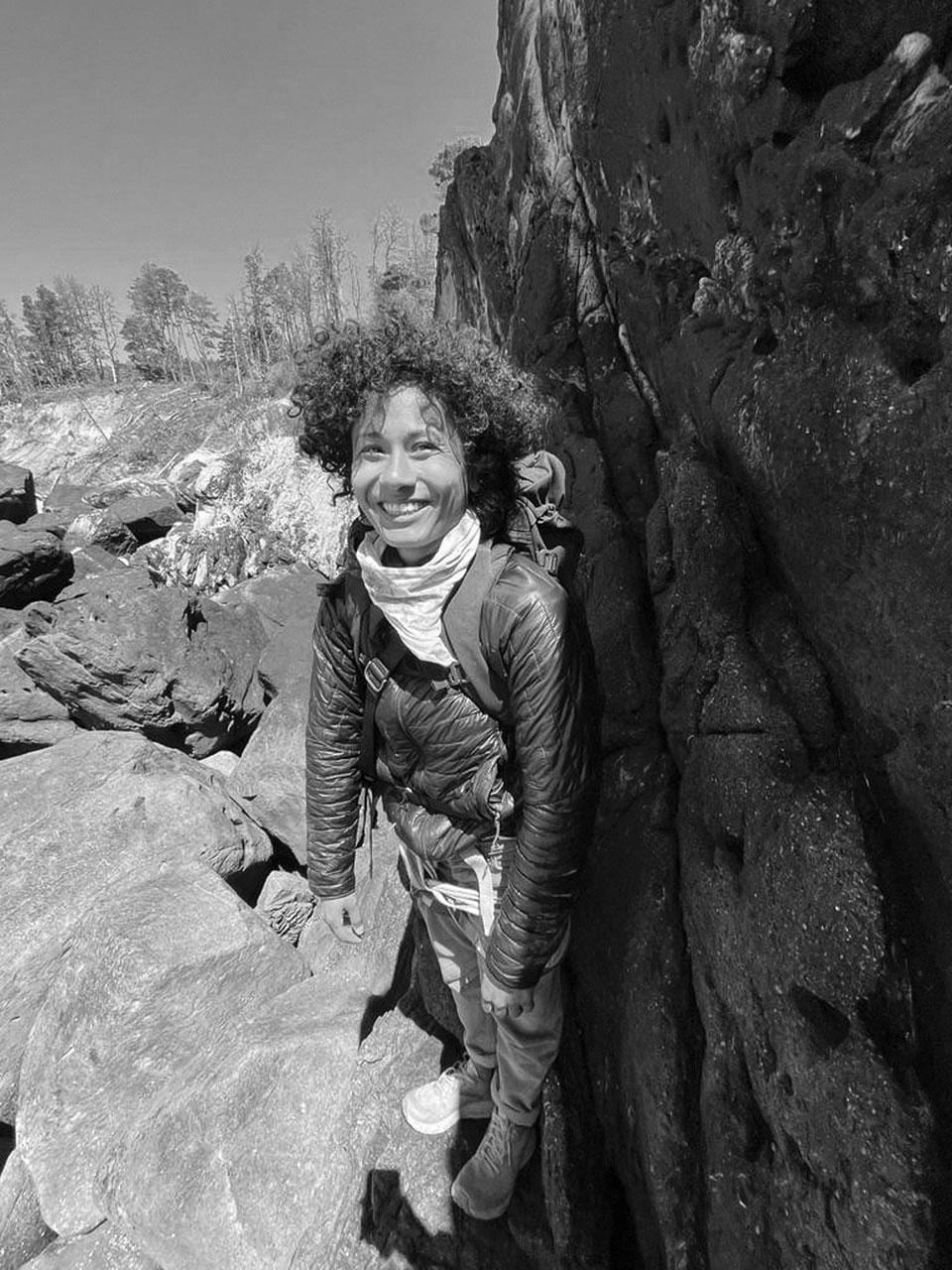
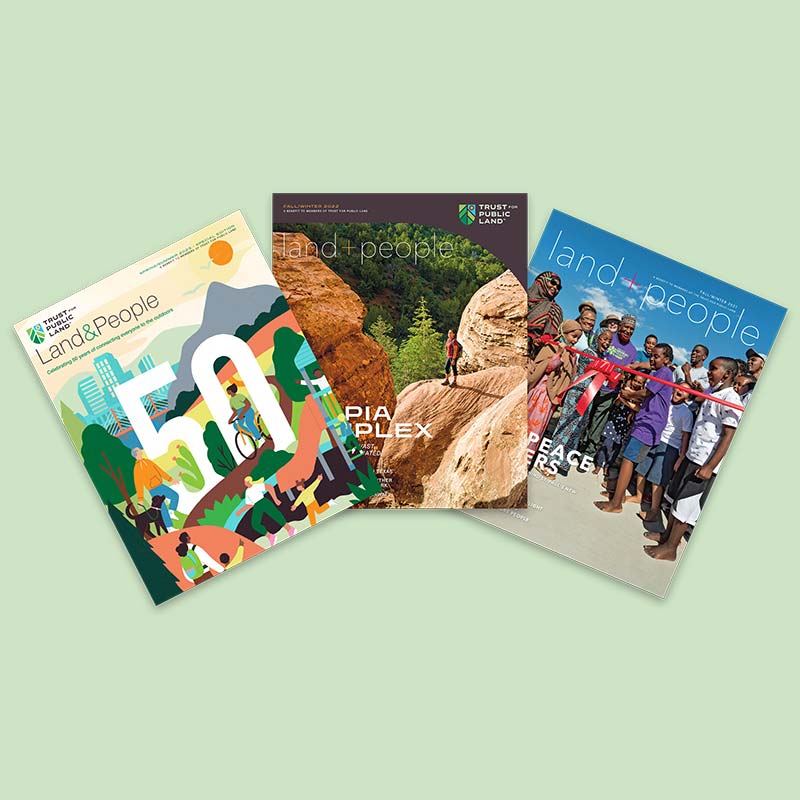
Donate to become a member, and you’ll receive a subscription to Land&People magazine, our biannual publication featuring exclusive, inspiring stories about our work connecting everyone to the outdoors.

